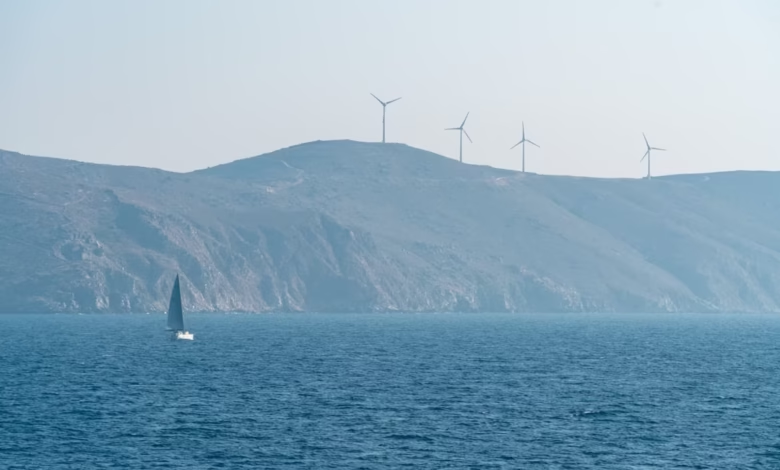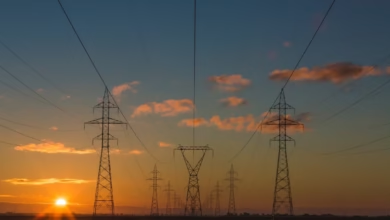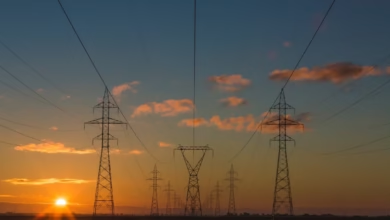Offshore Energy Innovations: Comparing Wind Farms, Fossil Fuels, and Marine Systems in the Global Energy Transition

The accelerating shift in global energy trends is reshaping how nations meet their growing demand for power, with offshore energy production emerging as a crucial player in this dynamic landscape. From expansive wind farms and technologically advanced oil drilling platforms to cutting-edge tidal energy systems, the marine environment is now a hub for pioneering energy innovations. As countries strive to balance energy security, climate change mitigation, and economic growth, diverse offshore energy solutions are transforming the renewable energy and fossil fuels mix. This evolution is not only fueled by rapid advancements in energy storage, smart grids, and distributed energy management, but also shaped by evolving energy policy, investment flows, and the ongoing energy transition toward greener, more sustainable sources. In this article, we will compare the leading technologies in offshore energy—including wind energy, oil and gas production, and emerging marine systems—explore their impact on global energy economics and climate strategies, and highlight ways to enhance efficiency and sustainability through green energy innovations.
- 1. Comparing Offshore Energy Technologies: Wind Energy, Fossil Fuels, and Innovative Marine Systems
- 2. Offshore Energy’s Role in the Global Energy Transition: Policy, Investment, and Climate Change Impacts
- 3. Enhancing Offshore Energy Efficiency: Storage Solutions, Smart Grids, and Green Energy Innovations
1. Comparing Offshore Energy Technologies: Wind Energy, Fossil Fuels, and Innovative Marine Systems
When examining the landscape of offshore energy production, three distinct technologies stand out: offshore wind energy, fossil fuel extraction platforms, and emerging marine energy systems such as tidal and wave energy. Each of these plays a unique role within global energy trends and the ongoing energy transition.
Offshore wind energy has rapidly gained attention as a pillar of renewable energy. Technological innovations and energy R&D have significantly improved wind turbine efficiency, allowing large-scale farms to generate substantial green energy directly from marine environments. The ability to integrate offshore wind into smart grids supports distributed energy models and strengthens energy security, especially for countries dependent on energy imports. Furthermore, wind energy offers a lower carbon footprint compared to fossil fuels and aligns with energy policy targets set to mitigate climate change.
Conversely, fossil fuel platforms—primarily used for oil and gas extraction—currently remain significant within energy economics and global energy markets. Offshore drilling continues to account for a major share of energy exports in many regions. However, these platforms face increasing scrutiny due to emissions, limited energy efficiency, and the challenge of integrating carbon capture technologies. As energy markets pivot toward decarbonization, investments in offshore fossil fuels often compete with those aimed at expanding renewable energy and hydrogen energy infrastructure.
Innovative marine energy systems, such as tidal and wave energy, represent the next frontier in offshore energy innovations. Though not yet as widely deployed as wind energy or fossil fuels, these systems have the potential to provide consistent, predictable renewable energy, thus enhancing energy storage strategies and bolstering grid reliability. Advances in marine technology improve the feasibility of coupling tidal energy with other renewables like solar power and bioenergy, further diversifying the offshore energy mix. New projects often receive support through energy policy measures focused on climate goals, distributed energy adoption, and advancing energy exports in the form of clean power.
Comparisons across these offshore technologies reveal a broader shift in energy investment priorities, with growth in green energy and heightened attention to energy transition pathways. Wind and marine renewables are increasingly favored for their positive impact on energy efficiency, reduction in greenhouse gases, and role in meeting the demands of electric vehicles and other clean technologies. Meanwhile, the future competitiveness of fossil fuel platforms will likely depend on innovations in carbon capture, energy storage, and integration with distributed energy systems.
References
No references were cited in this response. Please ensure all factual statements and statistics are properly sourced prior to publication.
2. Offshore Energy’s Role in the Global Energy Transition: Policy, Investment, and Climate Change Impacts
As the world shifts toward cleaner, more sustainable energy sources, offshore energy is taking center stage in the global energy transition. Major economies are reevaluating their energy policies to balance energy security, affordability, and climate change mitigation. Offshore wind farms, oil drilling platforms, and novel tidal energy systems are influencing energy markets by diversifying the energy mix and promoting green energy solutions.
Governments and investors are increasing energy investment in offshore renewable energy, propelled by ambitious net-zero targets and the declining costs of offshore wind energy and marine-based renewables. These investments also stimulate energy innovations in technologies like energy storage, smart grids, and hydrogen energy production—each crucial for overcoming the intermittency of wind and tidal power. Offshore energy thus forms a bridge between legacy energy systems based on fossil fuels and the emerging low-carbon infrastructure.
Policy frameworks are evolving to address both environmental and economic implications. Energy policy reforms often include incentives for energy R&D, carbon capture at offshore facilities, and stricter regulations on offshore oil drilling to reduce emissions and ecological risks. Many countries have implemented carbon pricing and green energy subsidies, encouraging the growth of energy exports from offshore wind and bioenergy installations while reducing dependence on energy imports linked to fossil fuels and nuclear energy.
Offshore projects are also crucial for combating global climate change by displacing carbon-intensive thermal energy generation with renewable energy alternatives. Their expansion supports distributed energy systems and improves overall energy efficiency in coastal regions. At the same time, integrating offshore energy resources with hydropower, solar power, and smart grids enhances the resilience and flexibility of national and regional grids, supporting the growth of electric vehicles and low-carbon industrial sectors.
By continuing to align offshore energy development with global energy trends and robust policy support, nations can achieve a smoother energy transition—creating economic opportunity, improving energy economics, and ensuring a more sustainable energy future.
References
International Energy Agency. (2023). Offshore Wind Outlook 2023. https://www.iea.org/reports/offshore-wind-outlook-2023
World Energy Council. (2022). World Energy Transition Outlook. https://www.worldenergy.org/publications/entry/world-energy-transition-outlook-2022
United Nations Environment Programme. (2023). Policies for Offshore Renewable Energy. https://www.unep.org/resources/report/policies-offshore-renewable-energy
3. Enhancing Offshore Energy Efficiency: Storage Solutions, Smart Grids, and Green Energy Innovations
As offshore energy production expands to meet rising global energy demands and shifting energy policy priorities, enhancing energy efficiency and sustainability has become critical. Developments in energy storage, smart grids, and green energy innovations are redefining offshore energy’s role in the worldwide transition from fossil fuels to renewable energy sources.
Effective energy storage is essential for offshore facilities, particularly for intermittent sources like wind energy and tidal power. Advanced battery systems, such as lithium-ion and emerging solid-state batteries, can store surplus energy generated during peak periods, stabilizing supply for integration into broader energy markets. Floating energy storage platforms and subsea battery arrays also reduce transmission losses and support distributed energy infrastructure, improving both energy security and resilience in the face of storms or equipment failures.
Smart grid technology is transforming the way offshore wind farms, oil and gas platforms, and tidal energy systems interact with onshore energy transportation networks. These intelligent networks can dynamically respond to changes in supply and demand, optimize the routing of electricity, and balance renewable and conventional power sources in real time. For example, integrating offshore wind farms into regional smart grids helps smooth out fluctuations, reducing reliance on carbon-intensive backup resources and supporting more stable energy exports and imports across borders.
Green energy innovations are fueling the long-term energy transition offshore. Projects combining offshore wind energy with floating solar power, hydrogen energy production via seawater electrolysis, or coupling renewable generation with advanced carbon capture systems are attracting growing energy investment. Offshore hydrogen production, in particular, is emerging as a promising strategy to decarbonize sectors such as shipping and heavy industry, offering a clean alternative to thermal energy or traditional fossil fuels.
Collaborative energy R&D across governments and industry is accelerating breakthroughs in offshore energy economics. This includes developing modular bioenergy platforms, early-stage grid-connected nuclear energy systems for remote platforms, and new materials to boost hydropower and wind turbine efficiency. These innovations not only improve the economic viability of offshore installations but also support global efforts to address climate change by reducing emissions and advancing sustainable energy imports and exports.
By embracing these energy innovations—cutting-edge storage, smart grids, and integrated renewable strategies—the offshore energy sector is playing a vital role in building a resilient, efficient, and low-carbon global energy system.
Conclusion
Offshore energy production is redefining the future of global energy markets by harnessing the power of both renewable energy sources such as wind farms and tidal systems, and more traditional fossil fuels through advanced oil drilling platforms. As highlighted throughout this article, the energy transition towards cleaner technologies is being driven by evolving energy policy, substantial energy investment, and urgent climate change imperatives. The integration of new storage solutions, smart grids, and distributed energy networks further enhances energy efficiency, supports green energy adoption, and underpins energy security.
The dynamic interplay between wind energy, tidal energy, hydrogen energy, and innovations like carbon capture and energy R&D are shaping a diverse and resilient offshore energy landscape. Moreover, developments in offshore energy contribute to greater flexibility in energy transportation, affect energy imports and exports, and play a vital role in overall energy economics.
A successful shift from reliance on fossil fuels to a balanced energy mix—including bioenergy, hydropower, nuclear energy, thermal energy, and solar power—will depend on continuous advances in energy innovations and the proactive involvement of policymakers and investors. As global energy trends continue to evolve, offshore platforms—across wind, tidal, and oil—remain central to ensuring a sustainable, efficient, and secure future for energy production, consumption, and transportation worldwide. Moving forward, fostering collaboration and supporting the deployment of emerging technologies will be essential to driving the next wave of offshore green energy breakthroughs.





